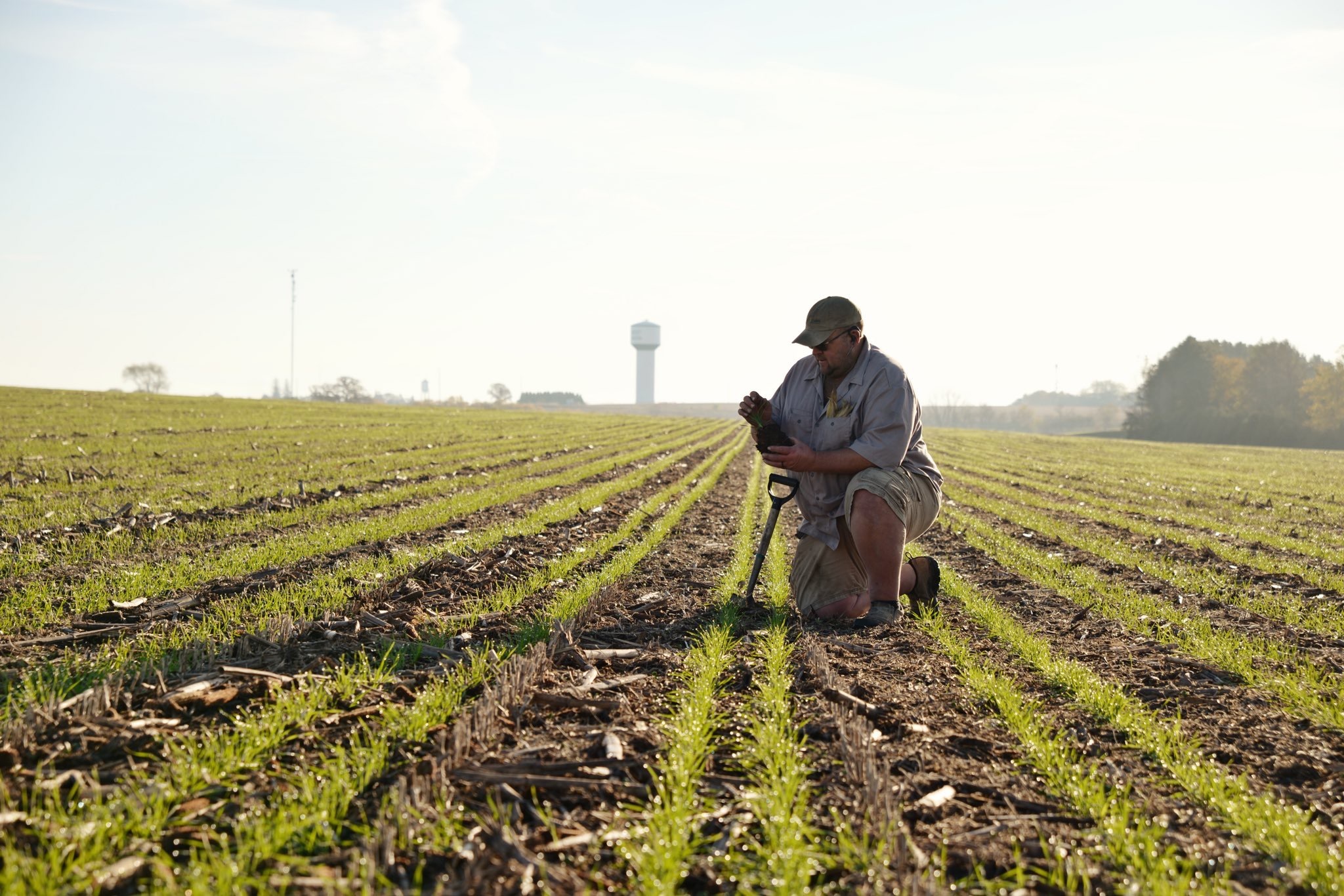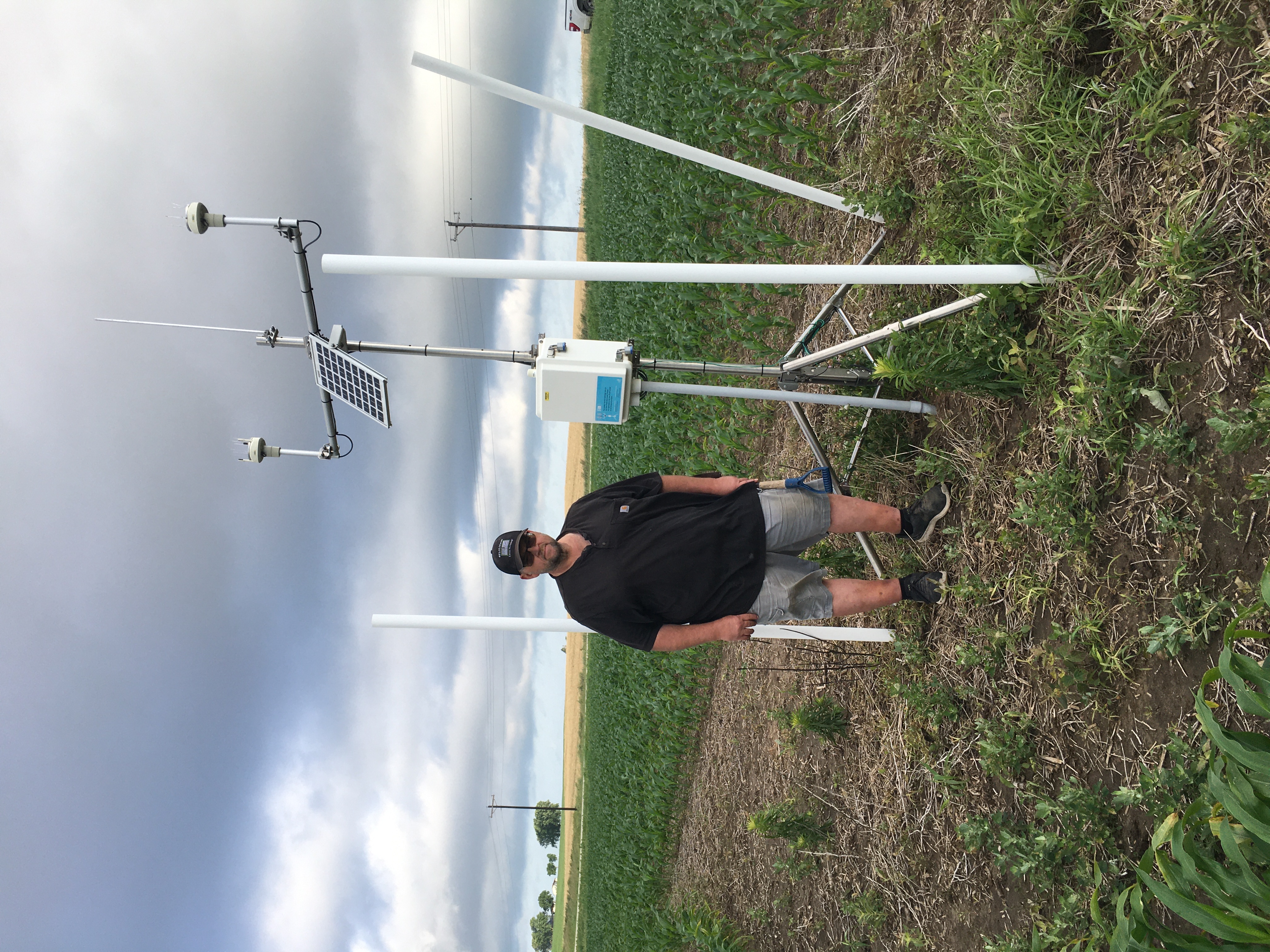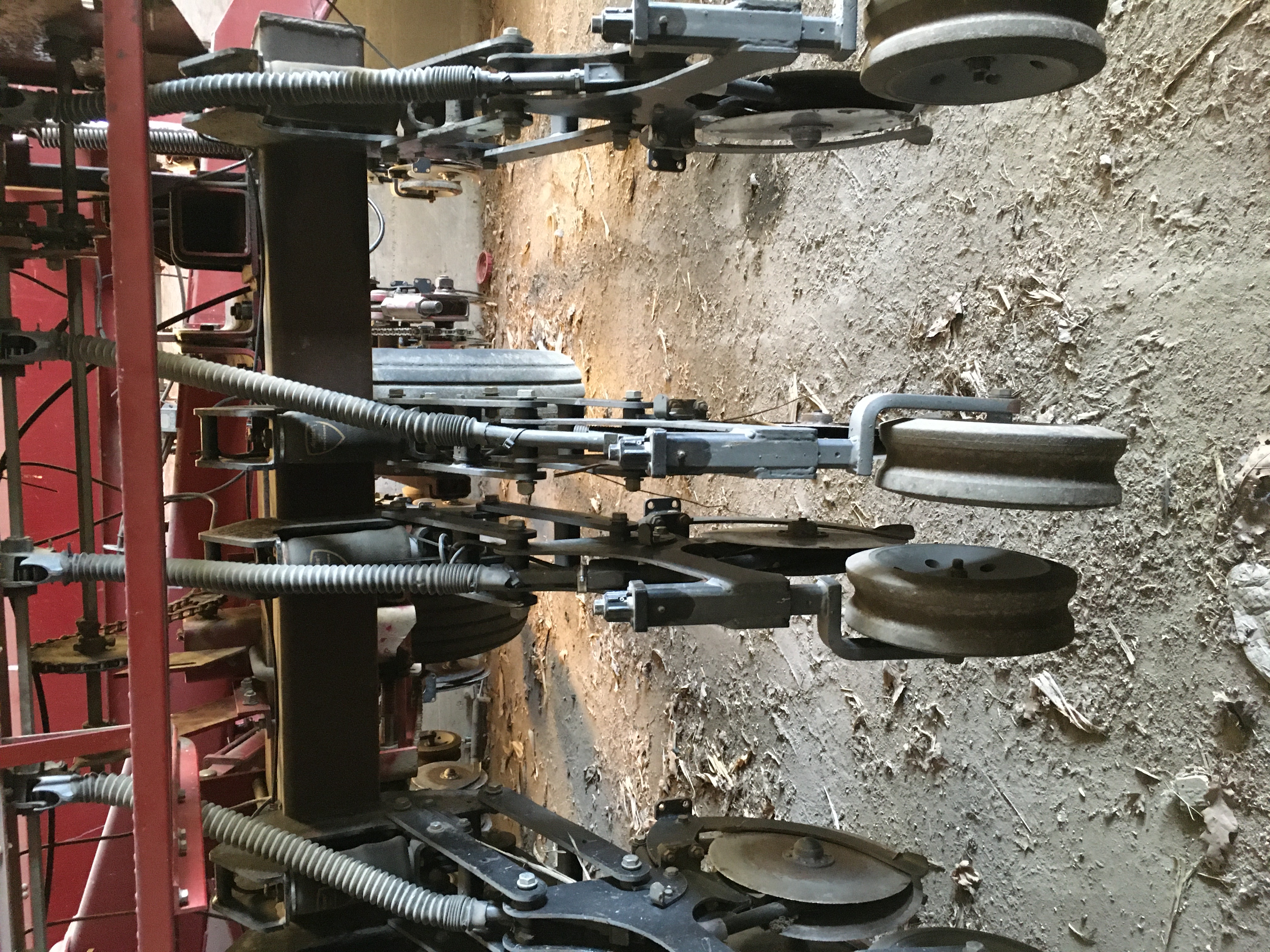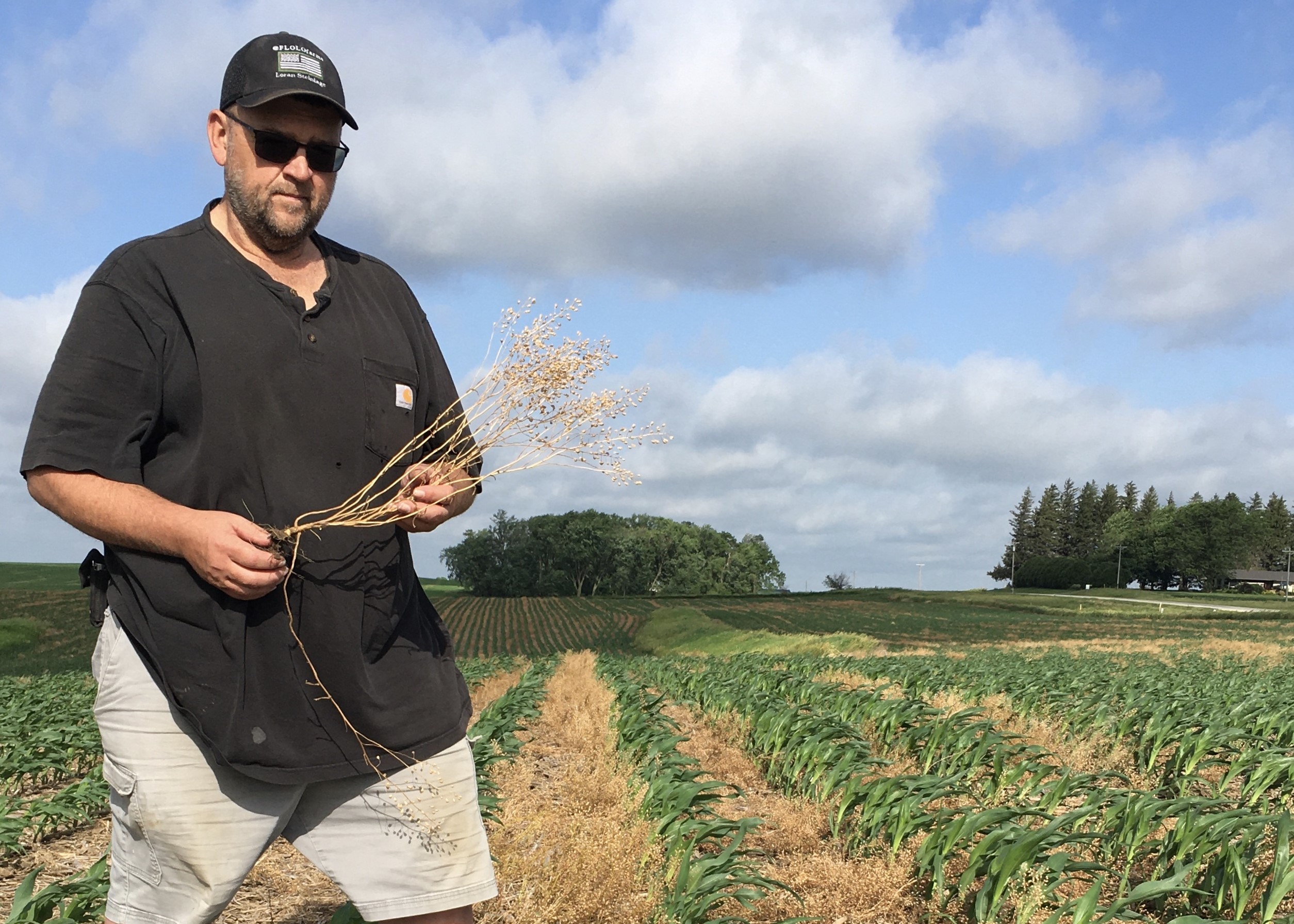By Dan Looker

The word, genius, brings to mind researchers in lab coats. Or Einstein’s shock of unruly white hair.
As Loran Steinlage’s pickup truck bounces past a cornfield, genius isn’t how he describes himself. Yet each field on his farm near West Union, Iowa, is an experiment with an operator that fits the definition of the word: surpassing expectations, setting new standards, and establishing better methods and insights for future success.

Steinlage’s willingness to try something new has led to his inventions for no-till farming equipment and to a system of harvesting rye, then soybeans in one field in a season. His work has earned recognition, from a No Till Farmer magazine Innovator Award in 2020 to the Iowa Leopold Conservation Award from the Sand County Foundation in 2023. One of his latest projects is field testing robots that control weeds between rows.
Arriving east of the home place of his family’s FLOLO Farms, Steinlage stops the truck and pulls out a small shovel. He plunges it into rich, chocolate-brown soil.
“There’s been interseeding in this field since 2006,” he says. Last year it grew a summer crop of cereal rye for seed followed by soybeans in the fall. This spring, his son-in-law planted no-till corn there.
Steinlage stands by a small tower with an antenna and a solar collector. Another one rises in a field across the road.
“What we’re doing here is monitoring long term management vs. short term,” he says. Both sensors measure rainfall and water infiltration for the University of Iowa’s Iowa Flood Information System.
Steinlage has farmed the field across the road for only four years. Soil cores taken there show dark organic matter about six inches down, compared to several feet in the field interseeded since 2006. Researchers estimate that the field with the most organic matter, if typical of all fields, would reduce flooding by about 50%.
That dark soil is rich in carbon and Steinlage shows it often to visitors, pointing out the worm holes and other evidence of thriving soil life.
“Carbon – it’s an awesome filter,” he says.
Proof of that lies downslope from the field – a waterway that looks like many in the rolling land of Fayette County. The waterway leads to a stream where wildlife experts were surprised to find trout. The fish are reproducing on their own; the stream isn’t stocked.
As Steinlage transitions his farm to his daughters and sons-in-law, he can look on all of this with pride. He’s not running a nature preserve, however. These changes result from the same economic pressures all farmers face to make a living. The home place lies atop gravel and sand-laden soil deposited by the last glacier to reach Iowa. His father was the first to successfully farm there, Steinlage says. It was his father who also started the family’s first efforts to plant without tillage.

Then, in 1992, Steinlage wanted to expand. He started renting land east of West Union, in the rugged area known as the Driftless Area.
One issue was poor soil structure where bulldozers had pushed up terraces. That’s when he started to experiment with cover crops, using annual ryegrass as a nurse crop for clover.
Over many years that evolved into Steinlage’s system of relay cropping cereal rye and soybeans.
“Everybody says we invented this, but it’s just trying to adapt new technology to old technology,” he says.
Steinlage uses twin planter units on a drill to seed double rows of rye in the fall. In May, he plants soybeans in a 30-inch space between the double rows of growing rye. In July, a combine with a modified John Deere row crop head harvests the mature rye.
One key to this is planting later maturity (3.9) soybeans not typically grown in northeast Iowa.
“When you take that cereal crop off, you don’t want the soybeans flowering. You want them in the vegetative stage,” he explains. “Then, when we get that cereal crop off, the soybeans kick in. It’s like a reset.”
Usually, the soybeans yield well following the rye. Last year, extreme drought brought only an inch of rain after cutting the rye. Yet Steinlage managed to harvest 35-bushel-an-acre soybeans—not great, but he had considered chopping the beans for silage to sell to neighboring livestock farms.
In a normal year, the relay cropping system is quite profitable.

“Between the rye and the beans, we can get the same return as a 250 bushel-an-acre corn crop,” Steinlage says. The rye and soybeans sell for comparable prices.
Steinlage may be best known for his relay cropping system, but he continues to experiment. In another field, he’s growing corn planted into a cover crop of camelina, mustard, and rapeseed, a test for the Iowa Soybean Association. These brassicas can suppress nematodes – a pest that causes $1.5 billion in annual yield losses. Near a cemetery at the edge of town, he grows plots of wheat for local breweries and open-pollinated corn for a tortilla maker.
Steinlage shares his experiences with other farmers. He encourages them to reduce tillage and try cover crops. He offers no easy, cookbook approach. Every year is different and he’s constantly adapting.
“You have to learn to pivot,” he says.
And farmers must find their own path.
“Too many people try to shame people into what we’re doing. You can’t do that,” he says. “The best way is to re-engineer our way of thinking and figure out how to make practices profitable.”
Learn more about Steinlage, his farm and family at this Sand County Foundation video.
Published on July 8, 2024.
